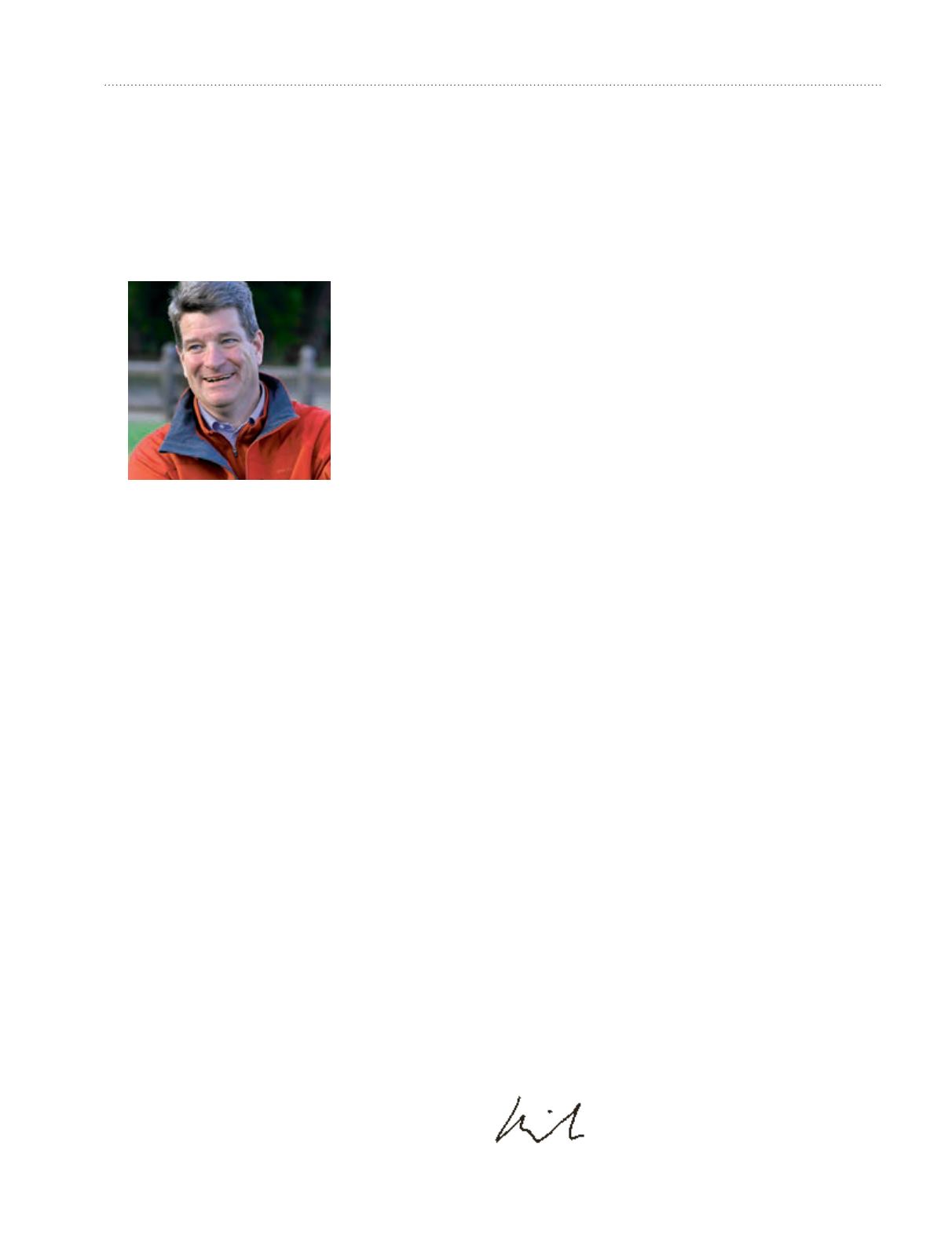
2
Legacy and Vision
Earlier this winter,
the School enjoyed a
Chapel talk from Rev-
erend Tom Johnson,
founding head of
Neighborhood Acad-
emy, a high school
for at-risk kids in
Pittsburgh.
Reverend Johnson
shared a wonderful
metaphor of gratitude and humility: “We all drink
from a well we did not dig.” I ruminated frequently
on this metaphor in the context of the sad occa-
sion of Bill Oates’s passing. Many of us have
thought much about Bill’s life and contributions
to the School since his death in January. Not only
was he a well digger, he was also a well designer.
The School owes much of what it is today to Bill’s
educational vision, which was nothing short of
courageous when it became reality at St. Paul’s in
the 1970s. He was a pioneer in putting students
first, in fashioning an educational philosophy
grounded in authentic respect for young people.
It was a radical idea as the nation was healing
from the Vietnam War, one of the greatest
intergenerational wounds in its history. While
many other schools did not survive this epoch,
St. Paul’s defined itself and thrived under Bill’s
leadership.
Bill’s legacy is too vast to recount here, but we
have him to thank for implementing co-education,
for the success of the first capital campaign in
School history, for the integration of the arts into
the academic curriculum, and for the creation of
the Independent Study Program. Generations of
students, including those of today, have Bill Oates
to thank for intervisitation, no lights-out policy,
vertical housing, and the elimination of school-
wide study hall.
Taking our cue from Bill, the School has been
hard at work on a series of initiatives born from a
strategic planning process and influenced by the
dynamic enterprise of educating adolescents in
a changing world. Much of our energy has been
expended in clarifying standards for teaching in
all realms of independent school life, but with
particular focus on classroom teaching. We have
implemented a system of Ongoing Professional
Learning (OPL), designed to identify teachers’
strengths and areas for improvement. OPL has
been successful in fostering dialogues about
teaching and learning, and teaching is less a
private act than it once was at St. Paul’s.
At the end of January, I asked the trustees to
approve plans to create a center for the advance-
ment of teaching and learning in Ohrstrom Library.
The plan calls for housing the OPL process, the
Penn Residency Master’s in Teaching Program, a
Penn mid-career master’s in teaching program,
our summer teaching institute, two video-equipped
laboratory classrooms, and a space for supervised
study hall. Most exciting for me is the possibility
that the center will be home to more rigorous
institutional research, a place to undertake assess-
ment of the effectiveness of programs, pedagogies,
and the student experience.
We have many other plans in motion, including
one to create a community center at Hargate –
arguably our most important capital project. Our
vision for this community center is that it be a
place where
all
members of the community will
feel welcome, one that will foster organic student/
adult relationship-building.
I also asked the trustees to approve plans to
move our fine arts program into what has become
an academic quad with the construction of the
Lindsay Center. The move of the fine arts into a
renovated Moore building will provide this signa-
ture academic program the space it deserves,
while maximizing connections between disci-
plines. Accompanying the move of the fine arts
will be the relocation of the art gallery to the
Freeman Center. Together these moves will create
an “arts neighborhood” with the Oates Perform-
ing Arts Center. We are excited about this prospect.
I confidently and shamelessly note here that
Mr. Oates would really, really like this idea too.
PETER FINGER
RECTOR


